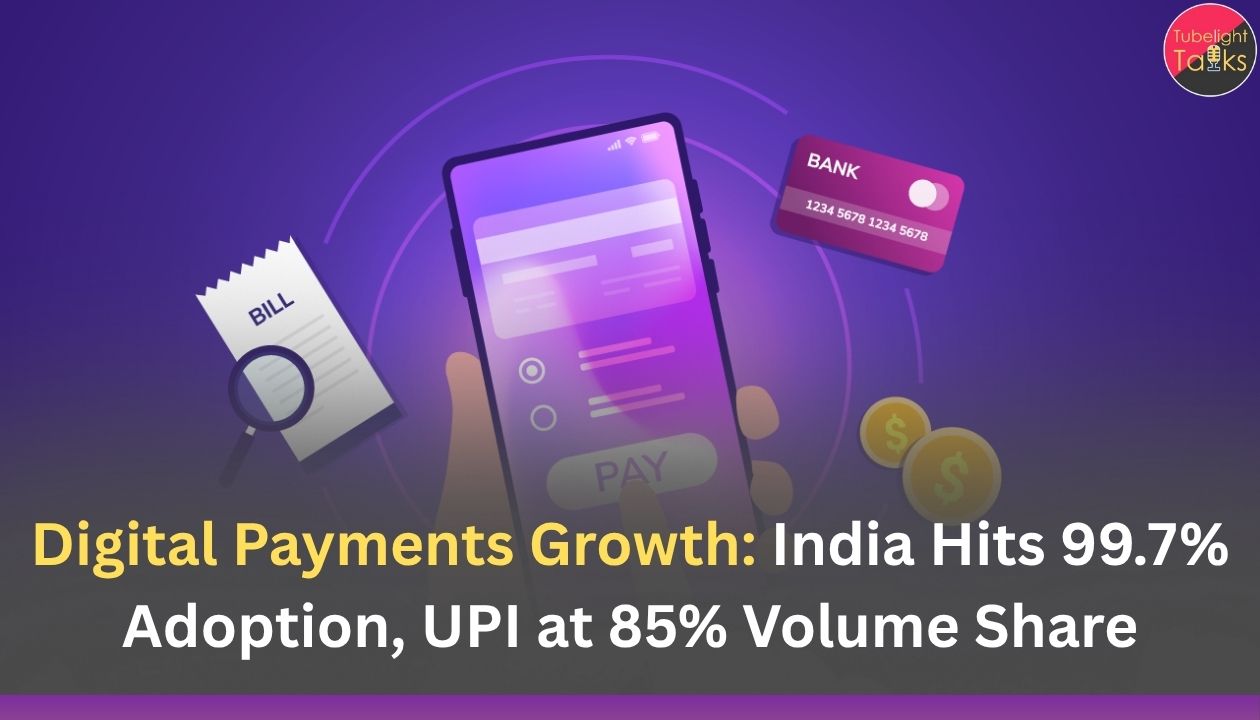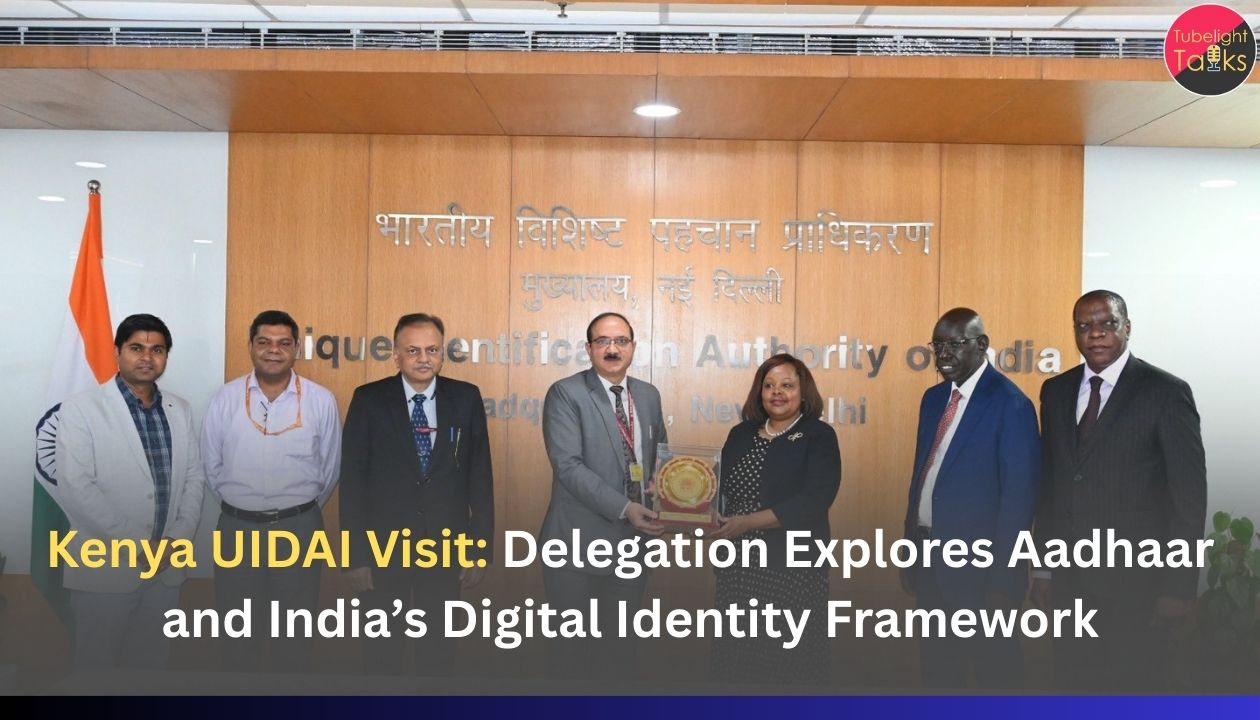Digital Payments Growth: India’s long-talked-about cashless economy is no longer just a slogan – RBI numbers now show it in hard data. A new Payment System Report (June 2025) from the Reserve Bank of India reveals that in calendar year 2024, digital payment transactions accounted for 99.7% of all payments by volume and 97.5% by value.
An infographic shared by the Press Information Bureau (PIB) on X (@PIB_India) highlights the key message: “99% of payments in India are digital; 85% via UPI. India is rapidly moving towards a cashless economy.”
The data underscores how UPI has become the backbone of everyday retail payments, while other digital systems like NEFT, IMPS, cards and RTGS handle high-value and institutional flows.
What the RBI report says
According to the RBI’s half-yearly Payment System Report (June 2025):
- In 2024:
- Digital payments made up 99.7% of total payment transactions by volume.
- They accounted for 97.5% of total payment value.
- Digital payments made up 99.7% of total payment transactions by volume.
- The number of payment transactions jumped from 3,248 crore in 2019 to 20,849 crore in 2024.
- In value terms, payments rose from ₹1,775 lakh crore in 2019 to ₹2,830 lakh crore in 2024.
RBI notes that “almost all of the growth in payments is attributable to digital payment transactions”, while paper instruments like cheques have continued to decline.
The trend has strengthened further in 2025, with digital payments in H1 2025 already touching 99.8% of transaction volume and about 97.7% of value.
UPI’s dominance: 85% of all transactions by count
Within the digital mix, Unified Payments Interface (UPI) is firmly on top:
- In H1 2025, UPI accounted for about 85% of total payment transactions by volume, according to the RBI report.
- However, UPI’s share in value is just around 9%, reflecting its role in small-ticket, high-frequency everyday payments.
- Large-value transfers are still dominated by RTGS, which accounts for a small fraction of transactions but a majority of total value.
Separate NPCI data shows UPI volume touching around 17,221 crore transactions in 2024, and crossing 20.7 billion transactions in October 2025 alone, driven by festival spending.
From kirana stores, street vendors and autorickshaws to taxi apps and billers, UPI QR codes and handles have become the default interface for retail payments in India.
Why the “99.7% digital” milestone matters
The RBI figures and the PIB infographic together highlight several structural shifts:
- Cash is now the exception, not the rule
- With 99.7% of transactions by count happening digitally, cash is effectively confined to a tiny portion of payments—mostly very small, informal or remote-area transactions.
- With 99.7% of transactions by count happening digitally, cash is effectively confined to a tiny portion of payments—mostly very small, informal or remote-area transactions.
- Digital rails are now “public infrastructure”
- Systems like UPI, NEFT, IMPS, NACH, cards and RTGS form a layered infrastructure connecting banks, fintechs, governments and merchants.
- Systems like UPI, NEFT, IMPS, NACH, cards and RTGS form a layered infrastructure connecting banks, fintechs, governments and merchants.
- Financial inclusion via mobile
- For many users, especially in rural and semi-urban areas, the first “bank branch” is their smartphone, not a physical building—enabled by Aadhaar, Jan Dhan accounts and UPI.
- For many users, especially in rural and semi-urban areas, the first “bank branch” is their smartphone, not a physical building—enabled by Aadhaar, Jan Dhan accounts and UPI.
- Policy leverage & export potential
- With domestic adoption nearly universal in volume terms, India is now trying to export UPI and RuPay and push for friendlier global rules at forums like FATF.
- With domestic adoption nearly universal in volume terms, India is now trying to export UPI and RuPay and push for friendlier global rules at forums like FATF.
At the same time, regulators repeatedly warn that cyber-fraud, phishing and social-engineering scams are rising along with digital volumes, prompting RBI and NPCI to run awareness and AI-based anti-fraud campaigns.
Cashless is good – heartless must not be
From a Satgyan perspective inspired by Sant Rampal Ji Maharaj, India’s payments story is a classic case where outer progress must be matched with inner values:
- It is now incredibly easy to send money in one tap, but just as easy to overspend, gamble or fall for frauds.
- Satgyan reminds that convenience without self-control can quietly lead families into debt and anxiety.
- Digital rails can bring pensions, subsidies and wages directly to the poorest.
In simple words UPI has made payments easy, but the direction of our life will still be set by right knowledge and devotion.
FAQs: RBI About Digital Payments Growth
1. What exactly does the RBI report say about digital payments?
That in 2024, digital payments accounted for 99.7% of all payment transactions by volume and 97.5% of total value in India.
2. Where does the “99% payments digital; 85% via UPI” line come from?
It is the headline from a PIB India infographic on X summarising the RBI report, highlighting that almost all payments are digital and about 85% by volume are routed via UPI.
3. How dominant is UPI in India’s payments mix now?
UPI accounts for roughly 85% of all payment transactions by count (H1 2025) but only around 9% of total value, as it is mostly used for low-value, high-frequency retail payments.
4. Is cash basically gone from India’s payment system?
Not fully, but cash and paper instruments together make up only a tiny share of total transactions by number, though cash still matters for some rural, informal and emergency use-cases.
5. What risks come with such high digital adoption?
Key risks are cyber-fraud, phishing, fake apps and social-engineering scams, which RBI and NPCI are trying to counter through awareness drives and AI-based fraud-detection systems. Users are urged never to share PINs/OTPs and to verify apps and links carefully.










